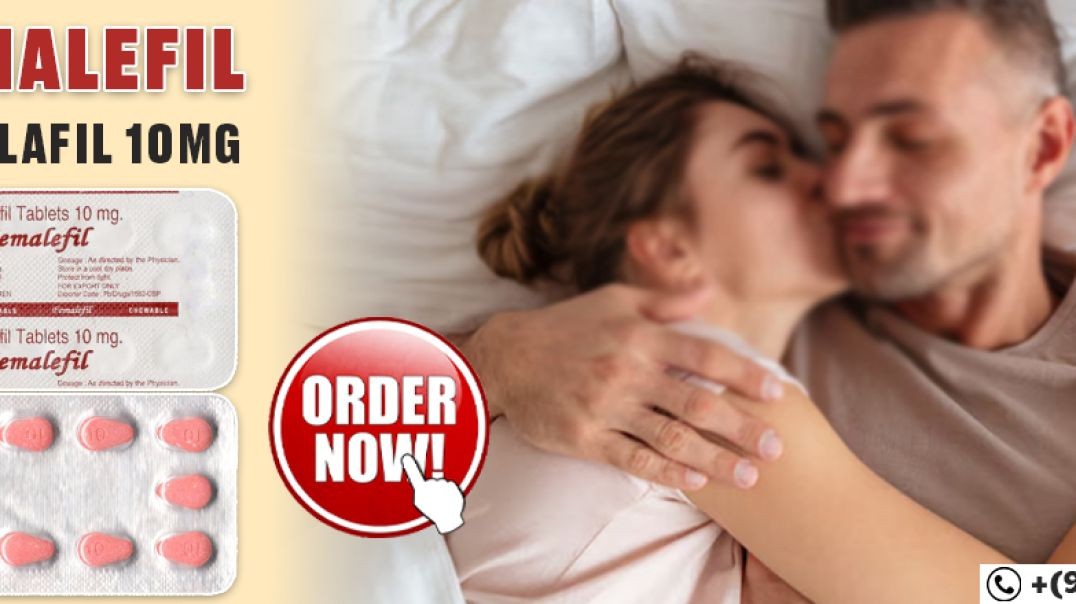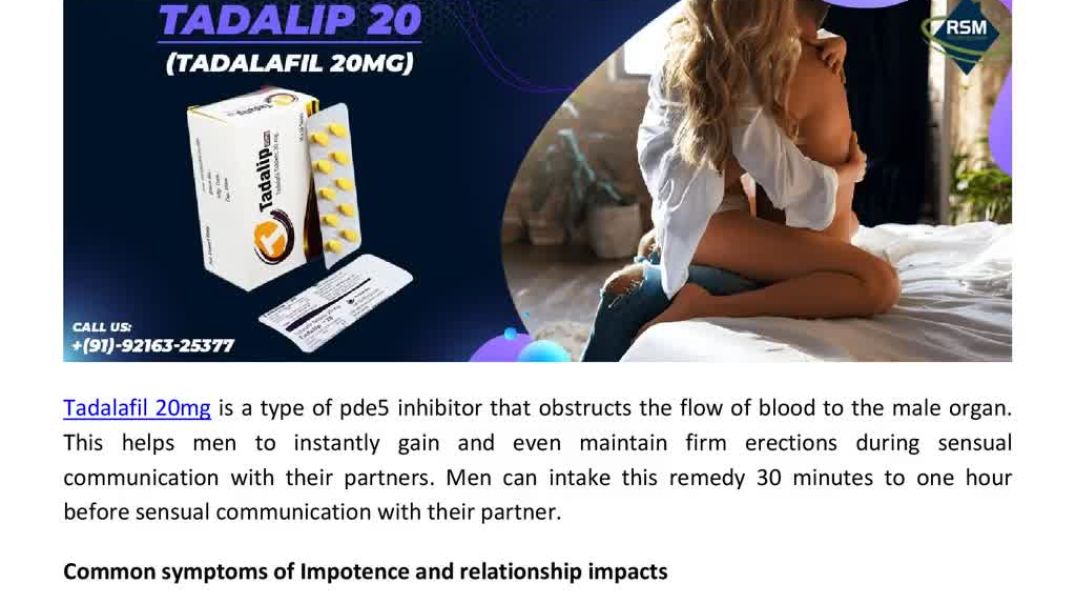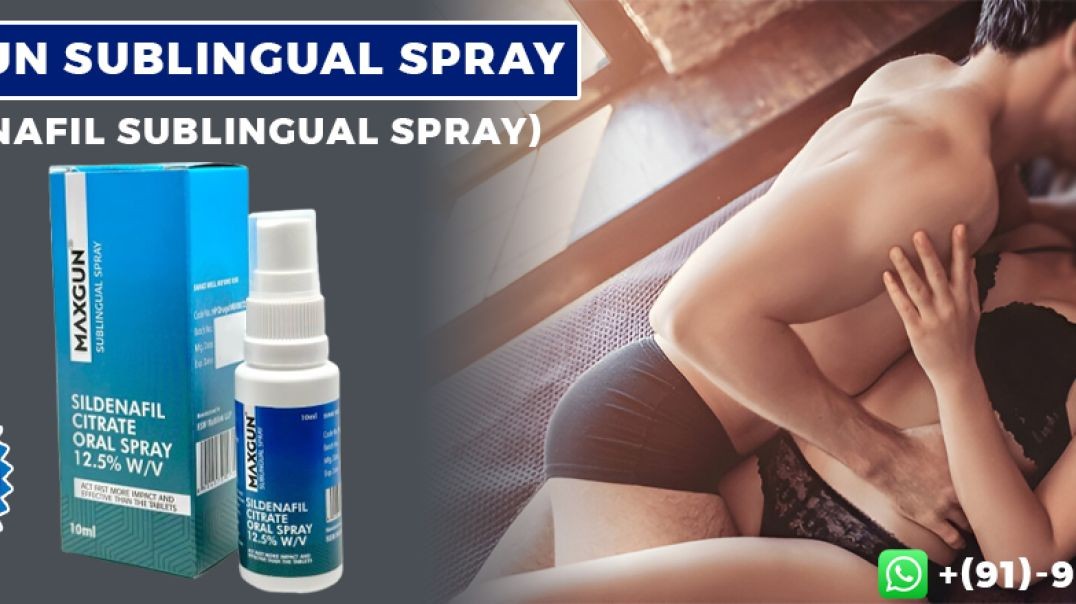Top videos
#anatomy #histology #biology #bytesizemed
✨If you would like my help studying the structure of bones, check out my long-form video on it.
🔅Structure of Bone : https://youtu.be/MYInVEnnS_I
💫 For more videos like this, subscribe to my channel!
Byte Size Med: https://youtube.com/channel/UC....ZghvlgylH3r_CWfA18eF
📚Factual References & for Further Reading:
- DiFiore's Atlas of Histology
- Junqueira's Basic Histology
- Gartner's Concise Histology
- Openstax Anatomy and Physiology
https://openstax.org/details/b....ooks/anatomy-and-phy
- Openstax Biology
https://openstax.org/details/books/biology-2e
(The last two are links to open-source references. They are NOT affiliate links)
🌤 Note:
These are just a collection of my notes. So use them the way you would use borrowed notes from a friend. 📝
The images in this video are hand-drawn for illustration and explanation only.✍️ Hence, they may not be anatomically accurate. I am just one person making these videos. If there are any errors, that is unintentional. I try super hard to avoid them. Please let me know if you find any, so it gets clarified for other viewers. Science constantly evolves and changes. New discoveries are made everyday. So some of the information in these videos may become outdated. If you notice that, please let me know so I can update them.
⚡️Disclaimer:
These videos are NOT a substitute for a medical textbook. Textbooks are written by experts (which I do not claim to be), edited, proofread and referenced. Please use them.
The information has been sourced from multiple references as mentioned above. I draw all the pictures myself. But if I have inadvertently infringed on any copyright, that is completely unintentional. I only make these videos to impart education. If I have accidentally violated copyright in any way, do let me know so I can make the necessary changes or give credit to anyone who is owed the same.
These videos are NOT intended for patient education. They are NOT a substitute for diagnosis and treatment by a licensed medical professional. Always seek the advice of a qualified health care provider for any questions you may have regarding any medical condition, so that they can address your individual needs.
🔅They are ONLY meant to help students of medicine and health sciences with studying, and should be used for just that purpose and absolutely nothing else.
Byte Size Med. All Rights Reserved.
Excerpt from my Normal Skin Histology video: https://kikoxp.com/posts/3660.
A complete organized library of all my videos, digital slides, pics, & sample pathology reports is available here: https://kikoxp.com/posts/5084 (dermpath) & https://kikoxp.com/posts/5083 (bone/soft tissue sarcoma pathology).
Please check out my Soft Tissue Pathology & Dermatopathology survival guide textbooks: http://bit.ly/2Te2haB
Also, in the past I used "keratinocyte" and "squamous cell" interchangeably (this is because in dermatopathology, we see and talk about squamous cell carcinomas all the time, and those tumors are composed of keratinocytes). But technically, in normal skin histology, "squamous cell" refers only to the flattened keratinocytes in the superficial epidermis. Thankfully, a histology PhD colleague pointed this out to me and corrected my lazy nomenclature!
This video is geared towards medical students, pathology or dermatology residents, or practicing pathologists or dermatologists. Of course, this video is for educational purposes only and is not formal medical advice or consultation.
Presented by Jerad M. Gardner, MD. Please subscribe to my channel to be notified of new pathology teaching videos.
Follow me on:
Snapchat: JMGardnerMD
Twitter: @JMGardnerMD
Instagram: @JMGardnerMD
Kiko: https://kikoxp.com/profile/jer....ad_gardner1/content?
Facebook: https://www.facebook.com/JMGardnerMD/
Sports Hernia: Causes, Symptoms, and Treatments. Explained by Dr. Tayyaba Ahmed is a doctor of physical medicine and rehabilitation at Pelvic Rehabilitation Medicine.
Topics discussed include:
Description of a sports hernia
Where a sports hernia is located
How this causes pelvic pain
Symptoms that may be experienced
Where pain can radiate
Causes of a sports hernia
Treatment options and recommendations
Dr. Tayyaba Ahmed completed the BS/DO program at New York Institute of Technology and was trained at the New York College of Osteopathic Medicine, Northwell Health Plainview Hospital and the NYU Langone Medical Center/RUSK Institute for Rehabilitation. A board-certified Physical Medicine and Rehabilitation physician, Dr. Ahmed is also a fellow of the Academy of Physical Medicine and Rehabilitation and a member of the International Pelvic Pain Society. Dr. Ahmed is a contributing author to a textbook which is considered a staple during every Physiatrist’s training. The fourth edition has been published in November of 2018. This full chapter title reference is: Ahmed T, Chan I: “Pelvic Pain”, which is included in, Essentials of Physical Medicine and Rehabilitation, 4th edition by Frontera W, Silver J, Rizzo T; Elsevier, Philadelphia, In Press. After spending the last five years honing her skills in outpatient care, Dr. Ahmed is ready to focus on her passion for treating pelvic pain. Dr. Ahmed has chosen a focused practice, because she believes concentrating on a specific field creates the greatest expertise. Chasing that greatness has been her consistent driving force.
At Pelvic Rehabilitation Medicine, our pelvic pain specialists provide a functional, rehab approach to pelvic pain. When you visit one of our offices, you spend an hour with your doctor reviewing in detail your medical history and symptoms. Then, we perform an internal exam (no speculum) to evaluate your nerves and muscles. Together, we'll discuss an individual treatment plan that gets to the root cause of your pain and helps you to feel better. The best part: you can begin treatment the same day!
At PRM, our mission is to decrease the time patients are suffering from pelvic pain symptoms.
LEARN MORE: https://www.pelvicrehabilitation.com/
JOIN OUR COMMUNITY and get in on the discussions happening:
✨ Facebook - https://www.facebook.com/PelvicRehabilitation
✨ Instagram - https://www.instagram.com/pelvicrehabilitation/
✨ Twitter - https://twitter.com/PelvicRehab
#PelvicRehabilitationMedicine #sportshernia #pelvicpain
****
Very often, we have patients who present with abdominal tenderness which likely is a sports hernia. A sports hernia is a weakness in the soft tissue and muscle area around their pubic symphysis and their lower abdomen. This is important because these muscles are their core muscles, and the core muscles are part of your pelvic floor as well. So if you have a weakness there, you will have a weakness in your pelvic floor and thus causing the pelvic pain. Having a sports hernia can now result into pelvic pain because of their weakness in their abdominal muscles and their core. Then patients may present with pain in their groin, they may present with pain going down their leg, pain in their hip. Pelvic pain does radiate, and it does not just stay in one location, so it can mimic other things like lower back pain.
Patients with sports hernias can attribute this from being very active. Oftentimes, they are athletes or have active lifestyles. We're evaluating their lumbar spine, we're evaluating their hips, we're evaluating their abdomen and checking to see if they could have a potential hernia. When patients have sports hernias, we also have to treat the underlying pelvic floor dysfunction that they may have.
Typically, we do that with pelvic floor physical therapists, possibly some Valium suppositories, maybe a nerve medication for any neurogenic inflammation, if they need, we may do hydrodissection nerve blocks and trigger point injections to their pelvic floor. And at the same time, we're hopefully working with a hernia surgeon to evaluate if there is a need for repair of the sports hernia. When patients present with pelvic pain, we're trying to understand where their pelvic pain is coming from and why they have it. Until we figure out what's causing the issue, the pain won't resolve.
Inguinal or groin hernias are the most common type of hernias and most of the time occur in men. We talked with CU Medicine surgeon, Dr. Sam Phinney, about groin hernias and how they are treated. https://www.cumedicine.us/abou....t-cu-medicine/health
Bluemen 100 (Sildenafil 100mg) Tablets comes with luminous benefits to help enhance erectile functioning in men. It comes with an active component of Sildenafil 100mg.
Buy Now : https://www.rsmenterprises.in/....product/viewdetail/b
#rsmenterprises #health #healthcare # Bluemen100mg #sildenafil100mg #genericviagra #maleviagra #edmedicine
Does Knee Replacement Surgery Meet Patient Expectations? In this video, I discuss knee replacement surgery or total knee arthroplasty expectations. A recent study reported that 1 in 4 patients who underwent knee replacement did not have their expectations met. The video reviews the differences in outcomes and satisfaction levels between satisfied and unsatisfied patients and identifies the key expectations that must be met for patients to be satisfied after knee replacement.
https://pubmed.ncbi.nlm.nih.gov/36740633/
► Things my patients have found helpful:
Please note that I get a lot of requests and questions about what equipment is ‘best’ for treating a variety of conditions. The following is not meant to be an exhaustive or definitive list. Please use it as a starting point. If you have questions, please discuss with your healthcare provider. With that said, I have tried a number of the products below, but not all. I have included some based on positive feedback from many of my patients. As an Amazon Associate, Dr Peng earns from qualifying purchases. If you purchase any product using the below affiliate links, you are helping Dr Peng maintain this channel.
*Soft Tissue & Rehab*
Theragun: https://amzn.to/4363zJG
Massage ball: https://amzn.to/40BUC9f
Foam roller: https://amzn.to/4324E5c
Stretching strap: https://amzn.to/3U9a2iQ
TENS unit: https://amzn.to/3mcCqnI
Heating pad: https://amzn.to/40VidSc
Resistance bands: https://amzn.to/3nFyb4C
*Braces & Supports*
Hinged knee brace: https://amzn.to/3U6oyrH
Neoprene knee sleeve: https://amzn.to/3Zzhsgt
Volar wrist brace: https://amzn.to/3KawW55
Thumb spica brace: https://amzn.to/3nHj9vl
Ankle lace up brace: https://amzn.to/3m6iR0u
Tennis/Golfer’s elbow brace: https://amzn.to/3ZEGgE1
Superfeet orthotic inserts: https://amzn.to/436tRf5
*Recommended Textbooks & Resources*
The Trigger Point Manual: https://amzn.to/4340cTt
Trigger Point Wall Charts: https://amzn.to/3zrinVR
► Be Active. Live Healthy. Subscribe for more free videos like this: https://www.youtube.com/channe....l/UCL5eiGK1f0A-DecaB
► ABOUT ME
Jeffrey Peng MD is a nonoperative orthopedist and sports medicine specialist. He created a YouTube channel and blog to translate cutting edge medical knowledge and clinical research to benefit all those looking to live an active and healthy lifestyle. He focuses on maximizing non-surgical treatments for sports injuries and orthopedic conditions. He specializes in using orthobiologics and ultrasound guided minimally invasive techniques to treat osteoarthritis, tendinopathies, and musculoskeletal disorders.
Dr. Peng is board certified in sports medicine and family medicine. He completed residency with the Stanford family medicine residency program and completed his sports medicine training with the Stanford primary care sports medicine fellowship in San Jose. He is an active faculty member for both programs and is excited about training the next generation of physicians.
Dr. Peng’s sports medicine clinic is located in Campbell, California.
Twitter: @JeffreyPengMD; https://twitter.com/JeffreyPengMD
Website: https://www.jeffreypengmd.com/
► Disclaimer
My content reflects my own opinion and does not represent the views or opinions of my employers or hospital systems I am affiliated with. They are meant for educational purposes only. They do not substitute for the medical advice of a physician. Always seek the advice of your physician with any questions you may have regarding your health.
Aurogra 100mg is a medication primarily used to treat erectile dysfunction (ED) in men. It contains sildenafil citrate, the same active ingredient as Viagra, and works by increasing blood flow to the penis, helping men achieve and maintain an erection when sexually stimulated.
Chat on WhatsApp with +91 92163-25377
Buy Now : https://www.rsmenterprises.in/....product/viewdetail/a
#rsmenterprises #health #healthcare #aurogra100mg #sildenafil100mg #menshealth #genericviagra #maleviagra
Buy Double X Power medication from rsmenterprises.in is used in erectile dysfunction and premature ejaculation treatment in men. The medication encompasses Buy Sildenafil 100mg and Dapoxetine in 60mg of proportion.
Chat on WhatsApp with +91 92163-25377
Buy Now : https://www.rsmenterprises.in/....product/viewdetail/d
#rsmenterprises #health #healthcare #doublexpower #sildenafil100mg #dapoxetine60mg #genericviagra #maleedmedicine
RSM Enterprises are engaged in manufacturing, supplying and exporting of Tadalafil 40mg + Dapoxetine 60mg (Super Tadapox).
Chat on WhatsApp with +91 92163-25377
Buy Now : https://www.rsmenterprises.in/....product/viewdetail/d
#rsmenterprises #health #healthcare #supertadapox #tadalafil40mg #dapoxetine60mg #edmedicine
What to Expect After Gynecomastia Surgery? गाइनेकोमेस्टिया सर्जरी के बाद क्या अपेक्षा करें-Dr Gautam
For more information gynecomastia surgery in Delhi, please visit our website: https://drrajatgupta.com/gynecomastia-surgery/
Gynecomastia Surgery Recovery: What to Expect
Have you recently undergone gynecomastia surgery or are planning to? This video covers everything you need to know about the recovery process in a simple and easy-to-understand way.
After gynecomastia surgery, it is normal to experience some bruising and swelling, which may increase for the first 2-3 days and then gradually decrease. Your doctor will make a small incision (about 3-6 mm) on the side of your chest, usually with a single stitch that is removed after seven days. Keeping the wound clean and applying prescribed ointments will help it heal properly. After two weeks, silicone gel is advised to improve the scar appearance.
You will also need to wear a compression garment for at least six weeks. This helps reduce swelling and ensures your skin tightens properly. Gentle massages start after two days and continue for about 6-8 weeks to speed up recovery. Painkillers and antibiotics will be prescribed for five days to help with pain and prevent infection. You can resume daily activities immediately, but intense workouts like cardio should start only after one week, and weight training after two weeks, while still wearing your compression garment.
If you experience any complications like swelling or severe pain, don’t hesitate to contact your doctor or visit the nearest health centre. Your recovery is important, and we’re here to help!
Be a part of our Gynecomastia community.
✅ Get insights from our patient community
✅ Ask our board-certified plastic surgeons anything
✅ View the before-and-after patients' results
✅ Connect with other patients & ask them about their experience
✅ First of its a kind initiative in INDIA for patient education and interaction
Join our community: https://drrajatgupta.com/community/
Gynecomastia Helpline: +91 95689 99333
Related Videos:
1. Positive Experience with Gynecomastia Treatment: https://youtu.be/49a-BchX0mA
2. How to treat Gynecomastia / Man boobs Permanently?: https://youtu.be/PDoQoj9dLA8
----------------------------------------------------------------------------------------------------------------
About Dr. Rajat Gupta and RG Aesthetics
At RG Aesthetics, India’s best plastic surgeon in India, Dr. Rajat Gupta is at your service! With 15 years of experience, brand certification, and international recognition, Dr. Gupta is the solution to all your contouring needs.
His expertise in liposuction techniques combined with the state-of-the-art technology available at RG Aesthetics ensures we continue providing the most reliable services with incredible, instantaneous results!
Our equipment allows for every kind of liposuction there is – especially the minimally invasive kinds. Dr. Gupta reflects RG Aesthetics’ belief of the patient’s comfort always being paramount. Procedures at RG Aesthetics, under Dr. Rajat Gupta, minimize trauma and speed up recovery time for the best results!
.
.
Schedule a Consultation:
☎ Call: +91-9090696951 / 9560156136
✉️ contact@drrajatgupta.com
⛓️💥 Visit: https://www.drrajatgupta.com
✅https://www.instagram.com/rajatguptadr
✅https://www.facebook.com/drrajatgupta/
✅https://www.linkedin.com/in/rajat-gupta-9a6b23119/
#gynecomastiarecovery #gynecomastiasurgerycost #gynecomastiatreatment #drrajatgupta #chestfatremoval #plasticsurgeryrecovery #compressiongarments #beforeandafter
Buy Femalefil 10mg Tablet is a powerful medicine intended only for women's use. The medicine has an active component of Female Tadalafil 10mg. It is effective in improving hypoactive sensual desire disorder in women.
Buy Now : https://www.rsmenterprises.in/....product/viewdetail/t
#rsmenterprises #health #healthcare #womenshealth #femalefil10mg #femaletadalafil10mg #femalegenericcialis #womenscialis
What is Breast augmentation procedure ?
Breast augmentation, sometimes referred to as a "boob job" by patients, involves using breast implants or fat transfer to enhance your breasts.The breast augmentation is a procedure, which many women desire to enhance the size of their breast. The breast augmentation procedure can be done in two ways:
1. Breast implant surgery
2. Fat grafting to the breast.
What is Fat grafting surgery for breast?
Fat grafting procedure has a limitation when we talk about breast augmentation. If patient desires half a cup size or a cup size increase , than the fat grafting procedure is used.
Fat grafting enhances the shape of the breast.
What is breast augmentation?
If a lady desires to increase her breast size more than a cup than she should go for breast implant.
Breast implants are basically made up of silicone gel. These are highly cohesive gel silicone implants which means size and shape of implant won't change. Its very difficult to rupture them so they are very safe. Each of these implants come with manufacturing warranty of 10 to 15 years , its an international barcoded warranty so that if you have any issue with implants it can replaced free of cost.
What is breast augmentation Procedure?
During the breast implant procedure , the implant is put above the pectoral muscle or behind the muscle . A pocket is made above or below the muscle. The implant is pushed inside the pocket using implant funnel . This pocket is designed in a way that it will suit the implant. The size of implant is chosen upon what are the patients expectations or requirements and also patients body shape.
We also perform 3D simulation preoperatively, where in patients body images are converted into 3D images and the patient can see how different size of implant will look on them . Depend on all these factors surgery is planned.
This surgery is a day care surgery . The patient can resume her work after the surgery .
Only precaution that patient needs to take is , she should not do weight lifting exercises for 6 weeks.
_______________________________________
About Dr. Rajat Gupta and RG Aesthetics
At RG Aesthetics, India’s best plastic surgeon, Dr. Rajat Gupta is at your service! With 12 years of experience, brand-certification, and international recognition, Dr. Gupta is the solution to all your contouring needs.
His expertise in liposuction techniques combined with the state-of-the-art technology available at RG Aesthetics ensures we continue providing the most reliable services with incredible, instantaneous results!
Our equipment allows for every kind of liposuction there is – especially the minimal invasive kinds. Dr Gupta reflects RG Aesthetics’ belief of the patient’s comfort always being paramount. Procedures at RG Aesthetics, under Dr Rajat Gupta, minimize trauma and speed up recovery time for the best results!
For more information please visit our website: https://www.drrajatgupta.com/
For more details,
contact us:+91-9251-711-711 or contact@drrajatgupta.com
#breastaugmentation #breastaugmentationprocedure #drrajatgupta #rgaesthetics
Pediatric surgeons at Texas Children’s Hospital West Campus perform general surgical procedures such as circumcisions, removal of foreign objects, hernia repair, and suturing of minor lacerations. While more complex surgeries take place at the Texas Children’s Main Campus, pre-operative and follow-up outpatient care for those procedures is available at the West Campus.
Everything about Texas Children’s Hospital West Campus is dedicated to the health and wellness of children. As greater Houston's first suburban hospital designed exclusively for children, we offer the expert care you've come to trust from Texas Children's Hospital coupled with a location that's convenient and accessible for area families. Our facility is located just off the westbound feeder road of the Katy Freeway (at I-10 and Barker Cypress).
For more information about Texas Children's Hospital West Campus, visit http://www.texaschildrens.org/....Locate/In-the-Commun
Meet Dr. Allen Milewicz, chief of community surgery at Texas Children's West Campus
https://www.youtube.com/watch?v=uMoCdipuKfA&index=16&list=PLiN68C9rloPBD-E9ChWhVy73h7V3SEMlm
Follow along on a typical day with UCSF Medical Center's chief of cardiothoracic surgery Dr. Tom Nguyen. Take a walk on rounds with his team as they check on patients who are recovering or preparing for heart valve surgeries to treat conditions such as mitral valve prolapse and mitral regurgitation. Get a glimpse into the operating room as Dr. Nguyen and his team use the latest non-invasive techniques to help patients achieve the best outcomes.
0:00 Surgeon begins day with morning report
0:53 Meet with fellows and visit patients
1:28 Surgeon thoughts on his practice
Minimally Invasive Surgeries
2:09 Mitral valve replacement for mitral stenosis
3:11 Mitral valve repair for AFib and mitral regurgitation
3:36 Stopping the heart
4:15 Culture 1 - Everyone's voice matters
4:45 Mitral valve repair for heart murmur
5:12 Culture 2 - Patient first
To view more UCSF videos relating to Mitral Regurgitation Treatment and Aortic Stenosis Treatment view:
Mitral Regurgitation Treatment Options https://youtu.be/7nUUOMx4tJ0
Aortic Stenosis Treatment Options https://youtu.be/A2rZK0oFWcc
If you want to learn more about the Cardiac Surgery clinic and to request an appointment visit: https://www.ucsfhealth.org/cli....nics/cardiac-surgery
#dayinthelife #heartsurgeon #heartsurgery #CardiacSurgery #Cardiology #ucsf #drnguyen#ucsfhealth #Cardiothoracic
Tadalip 20 is an efficient medicine that helps resolve the problem of Erectile Dysfunction. It comprises Tadalafil 20mg as an active component. The manufacturing of the medicine is done for RSM Enterprises.
Buy Now : https://www.rsmenterprises.in/....product/viewdetail/t
#rsmenterprises #health #healthcare #tadalip20mg #tadalafil20mg #genericcialis #malecialis #edmedicine
The Buy Sildenafil Oral Jelly (Kamini Oral Jelly) offered by RSM Enterprises is used for erectile dysfunction treatment. More easily swallowed than tablets and therefore Sildenafil Oral Jelly is suitable for elderly people and also for people who have difficulty in swallowing.
Buy Now : https://www.rsmenterprises.in/....product/viewdetail/s
#rsmenterprises #health #healthcare #sildenafiloraljelly #kaminioraljelly #genericviagraoraljelly #maleviagraoraljelly
Many women have complained about huge breast size. Huge breast is not only socially embarrassing problem but also cause pain in neck and shoulder and therefore women opt for breast reduction surgery. Let's learn more about breast reduction surgery
When to Consider Breast Reduction
-If your breasts are too large for your body frame and create back, shoulder or neck pain
-If you have heavy breasts with nipples and areolas (pigmented skin surrounding the nipples) that point downward
-If one breast is much larger than the other
-If you are unhappy and self-conscious about the large appearance of your breasts
Breast Reduction Preparation :
Breast reduction surgery, which usually takes from two hours or less do not require an overnight stay. The patient goes back home on the day of the surgery.
Firstly it is very important to know what is the present size of the breast and what size does the patients want the breast to be reduced? This present size and expected size needs to be clearly defined so that the doctor, as well as the patient, will know what is the desired size which will help in performing the surgery precisely. This is about the Cup size.
Secondly, The other measurement is regarding the band size which needs to be discussed in order to reduce. So that the size will be defined and the surgery will be done precisely.
The shape of the breast also needs to be discussed. A lot of women when they have saggy, huge breast do not have upper pole fullness and cleavage. Dr. Rajat Gupta performs surgery in such a manner that along with the desired size, the shape of the breast will also be achieved which will make it look aesthetic giving it upper pole fullness and defined cleavage.
Breast reduction surgery recovery
The breast reduction recovery process needs to be discussed with your doctor. Usually, breast reduction surgery is a daycare procedure The patient does not experience pain but they have " skin stretched feeling" as the doctor has reduced the size for which the doctors give pain killers. The patient can do all their daily activities from the next day. It is a very comfortable process but this needs to be discussed with your doctor as well.
Before undergoing the breast reduction surgery the patient needs to discuss the desired cup shape, band size, recovery process, shape of the breast, the shape of the cleavage and the scar of the surgery.
_______________________________________
About Dr Rajat Gupta and RG Aesthetics
At RG Aesthetics, India’s best plastic surgeon, Dr Rajat Gupta is at your service! With 10 years of experience, brand-certification, and international recognition, Dr Gupta is the solution to all your contouring needs.
His expertise in liposuction techniques combined with the state-of-the-art technology available at RG Aesthetics ensures we continue providing the most reliable services with incredible, instantaneous results!
Our equipment allows for every kind of liposuction there is – especially the minimal invasive kinds. Dr Gupta reflects RG Aesthetics’ belief of the patient’s comfort always being paramount. Procedures at RG Aesthetics, under Dr Rajat Gupta, minimize trauma and speed up recovery time for the best results!
For more information please visit our website: https://www.drrajatgupta.com/
For more details,
contact us: 91-9251-711-711 or contact@drrajatgupta.com
#breastreduction #reducebreastsize #breastreductionpreparation #drrajatgupta #rgaesthetics
Glass ampules are often used to store medication, and as a nurse, you'll need to know how to use them.
In this video, I demonstrate how to clean an ampule using alcohol prep, how to open (or break) an ampule, as well as how to dispose of the ampule.
In addition, I show how to use an ample filter straw while drawing up (withdrawing) medication, how to use the syringe, and how to remove the air bubbles in the syringe.
This is another video in our series on clinical nursing skills.
Notes: https://www.registerednursern.....com/how-to-withdraw-
Website: https://www.registerednursern.com/
More Videos: https://www.youtube.com/watch?v=R2XMro13dD0&list=UUPyMN8DzkFl2__xnTEiGZ1w
Nursing Gear: https://teespring.com/stores/registerednursern
Instagram: https://www.instagram.com/registerednursern_com/
Facebook: https://www.facebook.com/RegisteredNurseRNs
Twitter: https://twitter.com/NursesRN
Popular Playlists:
NCLEX Reviews: https://www.youtube.com/playli....st?list=PLQrdx7rRsKf
Fluid & Electrolytes: https://www.youtube.com/playli....st?list=PLQrdx7rRsKf
Nursing Skills: https://www.youtube.com/playli....st?list=PLQrdx7rRsKf
MaxGun Sublingual Spray is a cutting-edge solution containing Sildenafil Spray Sublingual, designed to enhance male vitality discreetly and effectively.
Buy Now : https://www.rsmenterprises.in/....product/viewdetail/m
#rsmenterprises #health #healthcare #maxgunsublingualspray #sildenafilsublingualspray #genericviagraspray




















